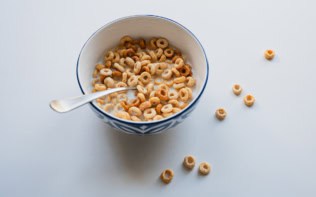
You are never too young to start learning about physics – and now researchers in Europe have backed this up by showing that babies just seven months old have a grasp of symmetry.
Irene de la Cruz-Pavía at the University of the Basque Country, Judit Gervain of the University of Padua and colleagues showed nearly 100 babies mosaic patterns in a study that was done at the University of Paris. The linear patterns had varying degrees of symmetry (see figure) and the babies were able to discriminate between patterns that were structurally symmetric and patterns that were asymmetric.
“Babies as young as seven months have a robust, automatic ability to detect that a structure is symmetrical. This ability coincides with those found in studies we conducted using other stimuli, such as sign language or speech, demonstrating that babies are simply very good at detecting structures and regularities,” says de la Cruz-Pavía.
I believe it was the Nobel laureate Philip Anderson who famously said, “It is only slightly overstating the case to say that physics is the study of symmetry,” so it looks like babies are physicists by nature.
The research is described in a paper in PLOS ONE.
Spicy space sausage
Like many other media outlets, Physics World gleefully reported last week how a photograph of a slice of chorizo had gone viral after prominent French physicist Etienne Klein joked on Twitter that it was the latest image from the James Webb Space Telescope.
Klein apologized for the prank after admitting it was just a piece of sausage from his fridge, but it looks like we need to say sorry too. That’s because, if we’d bothered to dig a tiny bit deeper, we’d have realised that the image had originally been tweeted a day before Klein by theoretical astrophysicist Peter Coles at Maynooth University in Ireland.
As Coles explains on his Telescoper blog, he posted the image on 30 July with the caption “Those JWST images just get better and better”, whereas Klein tweeted the same photo on 31 July. Coles, however, admits that it wasn’t even his image in the first place. “I didn’t make the picture and don’t remember where I got it from, though it was probably here,” he writes on his blog, referring to a tweet from 2018 by a user called Jan Castelmiller, who claimed the chorizo was the red-coloured “blood” Moon seen during a lunar eclipse.
The mystery of the stellar sausage deepens.
Sci-fi confession
I have a confession to make about science fiction: I can take it or leave it. Although I did a PhD in physics and I have since been writing about science for decades, I don’t really find it that compelling in an artistic or literary sense. Sure, I loved watching the original Star Trek series when I was a kid and I do enjoy the occasional sci-fi blockbuster. But you could probably count the number of sci-fi novels I have read over the past 25 years on one hand.
As a result, I had assumed that most people who dealt with science on a professional level shared my sci-fi ambivalence. So, I was surprised to discover that there appears to be a strong correlation between having a love for science fiction and being a professional astronomer. That is the finding of Elizabeth Stanway, who is an astronomer at the UK’s University of Warwick. Stanway conducted two surveys that asked astronomers about their attitudes towards science fiction and whether an interest in science fiction influenced their decision to pursue careers in science.
In one survey of more than 200 UK astronomers, a whopping 94% of respondents expressed an interest in science fiction. Furthermore, 69% said that science fiction had influenced their life or career choices. Writing in a paper on arXiv that reports her findings, Stanway says “This study provides strong statistical evidence for the role of science fiction in influencing the adoption of astronomical careers”.



